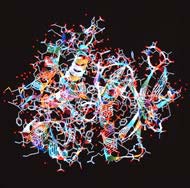
Two techniques may help deduce proteins’ functions.
Imagine trying to guess what machines do just be looking at them. Even a can-opener would pose problems, if you didn’t know about cans. This is the challenge that faces molecular biologists as they try to make sense of protein molecules in the cell.
Two new techniques may help. One deduces a protein’s function from its shape; the other deduces its shape from a list of component parts 1 , 2 .
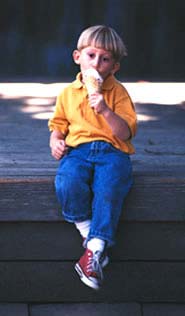
A large, long-term study confirms that diet can help some epileptic children.
A strict high-fat, low-carbohydrate, calorie-restricted diet reduces seizures in children with intractable epilepsy. So concludes the largest and longest trial of an eating plan that was first suggested almost a century ago.
For about two years, epileptic youngsters on a ’ketogenic diet’ eat 25% less than normal and consume 90% of their daily calories as fats. They take vitamins and minerals to avo
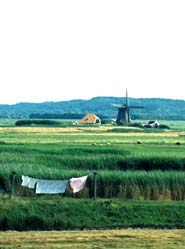
European subsidies to enhance farmland wildlife may not be working.
The effectiveness of schemes that seek to promote biodiversity by paying farmers to cut back on intensive agriculture could be called into question by some research findings from Holland.
The incentive programmes, which already cost the European Union 1.7 billion euros (US$1.5 billion) each year and are rapidly expanding in scope, are partly motivated by the desire of European governments to subsidize farmin
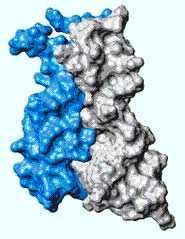
About half of all patients with hereditary breast or ovarian cancer have mutations in a gene called BRCA1. Now the first images of the protein the gene encodes, BRCA1, are helping researchers work out how the mutations cause human disease.
The pictures reveal fine detail of how BRCA1 interacts with other proteins. Such information should help researchers work out how BRCA1 prevents cells becoming cancerous. They suspect that it is involved in DNA repair, controlling cell division and regula
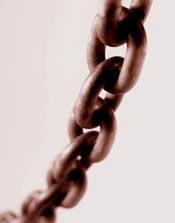
Chemists build molecules by paring them down
Complex molecules, such as many drugs, can be fiddly to assemble. By binding their starting compounds in chains 1 , chemists in Denmark may have found a way speed the automated chemical synthesis of such complicated products.
Les Miranda and Morten Meldal of Carlsberg University in Copenhagen have solved the following problem. Complex molecules are usually built up from a core with several near-identical hooks on w
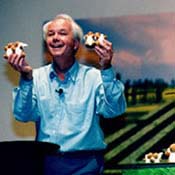
Mathematician Ian Stewart talks to Nature Science Update about snowflakes, sticklebacks and a new kind of science.
Ian Stewart was turned on to mathematics at the age of seven. A broken collarbone freed him from an uninspiring teacher allowing his mother to ignite his interest in numbers while he was laid up at home.
His writing career began with a series of how-to manuals for now-defunct early 1980s microcomputers. It has since broadened into popular science and science fi
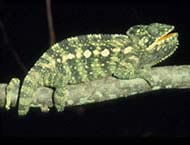
Chameleons can reel in prey anywhere within two-and-a-half body lengths of their jaws. Their tongues can overcome even a bird’s weight and reluctance to be eaten. How? Muscles that are unique among backboned animals, researchers now reveal.
Anthony Herrel of the University of Antwerp, Belgium, and colleagues put crickets at different distances from the noses of two chameleon species, Chameleo calyptratus and Chameleo oustaletti. The tongues of these 12-cm-long reptiles pull at maximum stren
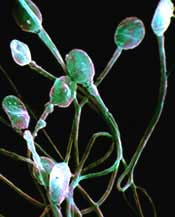
Sperm go slow without a crucial protein.
The discovery of a protein that is crucial to sperm swimming in mice could lead to new male or female contraceptives or fertility treatments.
The protein forms a channel through the membrane of the sperm tail. It controls the inflow of calcium ions that trigger swimming.
All humans have the gene that encodes the channel, but it is switched on only in sperm cells. This would lessen the risk of side-effects from any channel-blo
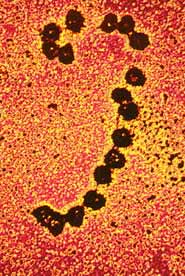
A new way to find genes and map disease.
A new technique should aid the hunt for genes in the human genome sequence. The method, which tracks only switched-on genes in cells, will help researchers to distinguish between diseased and normal tissues, and could point the way to new treatments.
Andrew Simpson, of the Ludwig Institute for Cancer Research in Sao Paulo, Brazil, and colleagues have produced a whopping 700,000 DNA tags, representing the genes that are active in 24 no
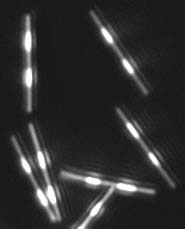
Stripes help chemists shop for molecules.
Scientists may soon be sticking bar-coded metal rods into molecules to see what they do in a crowd 1 . The rods could help to track the functions and interactions of genes, and may aid drug discovery.
At only a few thousandths of a millimetre long, the rods are small enough to fit inside a single red blood cell. Christine Keating, of Pennsylvania State University, and colleagues cast them inside cylindrical pores in a
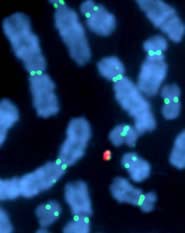
Sequencers expose secret chromosome centre.
February’s celebrations hid a dark secret: the human genome sequencers hadn’t touched the hearts of our chromosomes. Now, at last, one chromosome’s inscrutable midpoint, its centromere, has given up its genetic secrets.
Centromeres look like the ’waist’ in an X. They share out chromosomes fairly when a cell divides. Defective centromeres may underlie many cancers, in which problems with chromosome movement

Cosmic lens magnifies faint galactic building-block.
Astronomers have peered deep into space and time and spotted a baby galaxy. Their results suggest that the tiny star-forming region may have helped to build today’s Universe 1 .
“We believe this is one of the galactic building-blocks that join together to make larger galaxies,” says Konrad Kuijken, of the Kapteyn Institute in Groningen, the Netherlands, a member of the team that found the object. The mergin
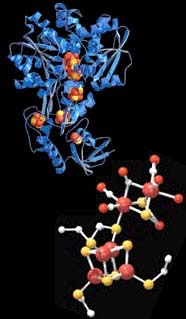
Chemists copy bacterial tricks for making clean fuel.
Bacteria are teaching chemists their tips for creating lean, green fuel. US researchers have developed a catalyst based on a bacterial enzyme that converts cheap acids to hydrogen, the ultimate clean power source.
Unlike other fuels, hydrogen is non-polluting: its combustion makes only water, instead of greenhouse gas carbon dioxide or the poison carbon monoxide. Thomas Rauchfuss and colleagues at the University of Illino

Mouse studies emphasize children’s cancer risk from sunburn.
Serious sunburn in childhood may raise the risk of developing the deadliest form of skin cancer as an adult, research in mice suggests 1 . The experiments could lead to a better understanding of malignant melanoma and of how and when to protect ourselves from the sun.
“I have my kids wear hats and put sunscreen on like crazy now,” says the study’s leader Glenn Merlino, of the National Cancer Institu
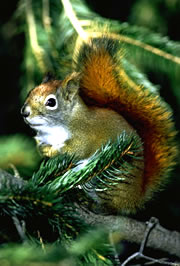
Museum exhibits’ genes record British forestry policies
Commercial forest planting in the north of England drew red squirrels westwards in the 1980s say UK researchers. This migration led to big changes in squirrel numbers and genetics.
The finding has implications for the protection of the endangered red squirrel (Sciurus vulgaris). Many conservationists advocate leaving ’wildlife corridors’ for animals to travel between patches of fragmenting habitat. This is the first evi

Spells and incantations step aside: scientists have found a genetic elixir of love. It makes males more faithful to females and more friendly to fellow males. It could also shed light on bonding disorders such as autism.
Larry Young of Emory University in Georgia and colleagues used a virus to deliver a gene straight to the part of voles’ brains responsible for rewards and addiction, the ventral pallidum. The gene made the animals’ brains more receptive to the hormone vasopressin 1